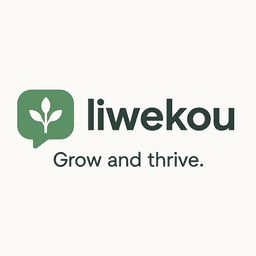How to declutter your digital life for better productivity and focus
Digital clutter builds up slowly: dozens of unread emails, hundreds of photos, a messy desktop, endless notifications. Left unchecked, it increases cognitive load, steals attention, and makes simple tasks take longer. This article shows a practical, step by step approach to declutter your digital life so you can reclaim time and focus. You will learn how to audit what matters, create sustainable organization systems for files and tools, tame communication channels and notifications, and set up maintenance and automation so clutter does not return. The aim is not perfection but consistent improvement: small, repeatable habits that lower friction, speed decision making, and give you more uninterrupted time for work that matters.
Audit and reduce
Start by measuring where your digital attention goes. A focused audit reveals the biggest sources of friction and makes next steps obvious.
- Inventory devices and accounts: List computers, phones, tablets, cloud accounts, social logins, and subscriptions. Note frequency of use and purpose.
- Email and subscription sweep: Sort your inbox by sender and subject to find recurring newsletters and services. Unsubscribe from anything you do not open regularly. Use bulk tools or search filters to remove old lists.
- App and extension pruning: Remove apps and browser extensions you no longer use. Each installed item adds update overhead and potential distractions.
- Set priorities: Assign each item a simple status: keep daily, keep occasional, archive, or delete. Be ruthless with duplicates and low-value services.
Action steps:
- Spend one hour listing accounts and subscriptions.
- Use a 10-minute inbox sweep to unsubscribe and archive old mailing lists.
- Uninstall unused apps and disable browser extensions, then reboot the device.
Organize files and workflows
Once you have fewer tools and accounts, create predictable systems for where things live and how you find them. Good organization reduces decision fatigue and search time.
- Folder structure and naming conventions: Choose a shallow folder structure with consistent file names: date (YYYY-MM-DD) + project + short description + version if needed. Example: 2025-08-01_ProjectX_MeetingNotes_v1.pdf
- Use tags and metadata: When your OS or tools support tags, use them for cross-folder grouping like “invoices”, “clientA”, or “urgent”.
- Centralize cloud storage: Keep active projects in one cloud folder synced across devices. Archive completed projects to a separate archive folder or cold storage.
- Single source of truth: Choose one task manager, calendar, and notes app and keep them as primary. Duplicate information across tools only when necessary.
Search tips:
- Learn advanced search operators for your email and OS.
- Use optical character recognition in cloud storage to find text inside images and PDFs.
Example checklist to implement today:
- Create main folders: Active, Archive, Reference.
- Rename five recent files using the naming convention.
- Move old projects to the Archive folder and set them to read-only or offline storage.
Manage communications and notifications
Communication tools are the most frequent source of interruptions. Controlling them restores focus and protects deep work time.
- Email rules and batching: Create filters to route newsletters, receipts, and notifications to dedicated folders. Check email on a schedule, for example twice daily, and use short processing rules: delete, delegate, defer, or do.
- Chat and collaboration norms: Set status messages and quiet hours. Encourage teammates to use threads and project channels rather than DMs for nonurgent coordination.
- Notification hygiene: Audit push notifications on phones and browsers. Disable nonessential alerts and enable priority-only or summary modes.
- Browser tab management: Use a single start page, bookmarks, and tab groups. Close or suspend tabs you are not actively using.
Practical routines:
- Set email checks at 10:00 and 16:00 and use an autoresponder during deep focus blocks.
- Turn off social media notifications and check those apps only during specified breaks.
- Use “do not disturb” or focus modes for meetings and work blocks.
Maintain and automate
The true benefit comes from preventing clutter from returning. Regular maintenance and smart automation keep systems lean and free up mental bandwidth.
- Weekly and quarterly reviews: Weekly 15-minute tidy-ups to clear inboxes and close tasks. Quarterly deep cleans to review subscriptions, file archives, and app lists.
- Automate repetitive tasks: Use rules, filters, and automation tools like rules in your email client, workflow apps such as Zapier or Shortcuts, and automated backups.
- Backup and security: Automate backups for critical data, enable two factor authentication, and store passwords in a manager. Regularly remove unused shared folder access.
- Measure impact: Track time saved and stress reduced. Small measurable wins help maintain motivation.
Simple automations to start with:
- Auto-label invoices and receipts in email and forward them to a bookkeeping folder.
- Automatically archive files older than two years into cold storage.
- Use scripts to clear temporary files and caches weekly.
Estimated time savings and impact
| Method | Typical action | Estimated weekly time saved |
|---|---|---|
| Email filters and batching | Route and check twice daily | 1.5 to 3 hours |
| Uninstall unused apps | Remove, reclaim updates and focus | 30 to 90 minutes |
| File naming and archiving | Faster search and retrieval | 30 to 120 minutes |
| Notification control | Disable nonessential alerts | 1 to 4 hours |
| Automation rules | Auto-organize and backup | Varies, often 1+ hours saved |
Conclusion
Decluttering your digital life is a sequence: audit to identify the biggest drains, organize files and workflows to reduce friction, manage communications to protect attention, and maintain systems with regular reviews and automation. Start small: a one-hour audit, a 15-minute weekly tidy, and two daily email checks can produce immediate improvements. Over time, consistent naming, centralized storage, notification hygiene, and a few automations compound into hours reclaimed each week and clearer mental space. The goal is sustainable simplicity, not perfection. Pick one area, apply the steps above, and schedule a quarterly review. With modest, persistent effort you will notice better focus, faster work, and less stress from your digital environment.
Image by: Cup of Couple
https://www.pexels.com/@cup-of-couple



